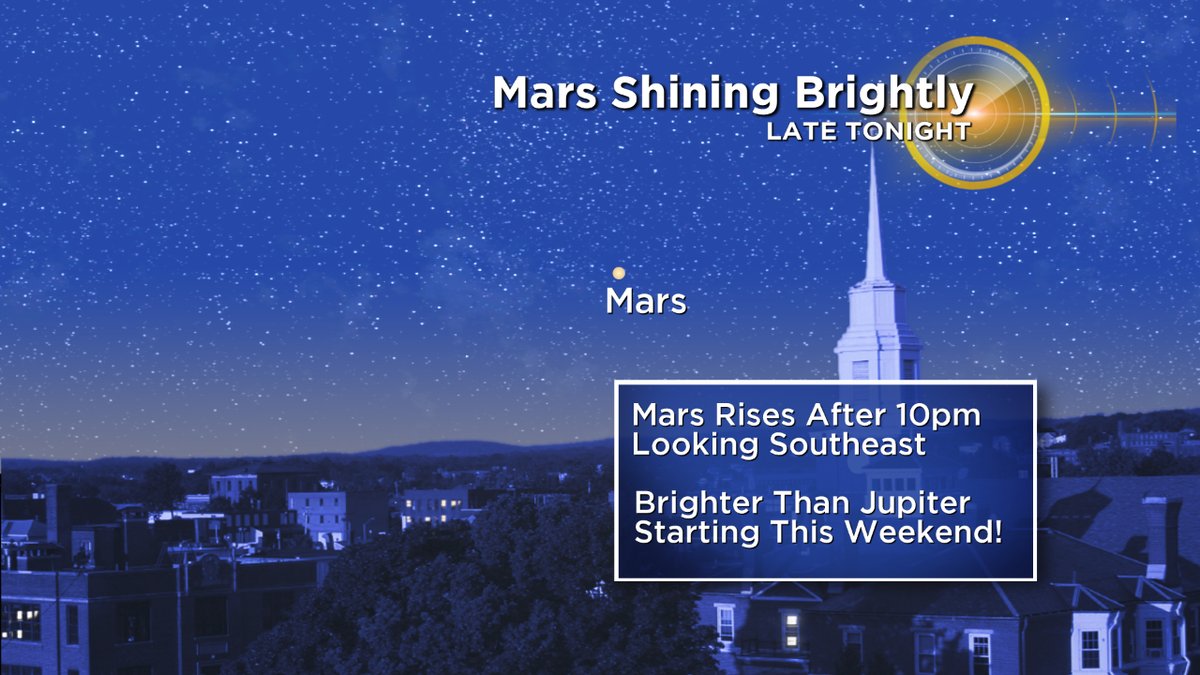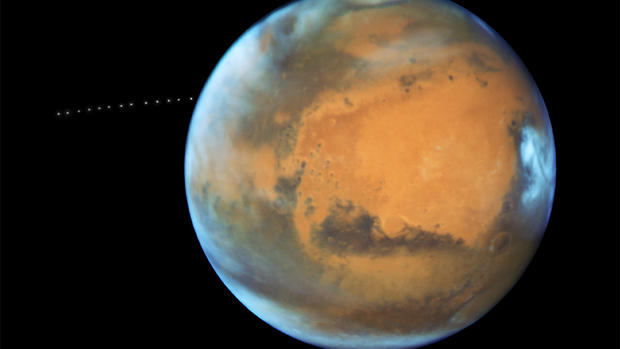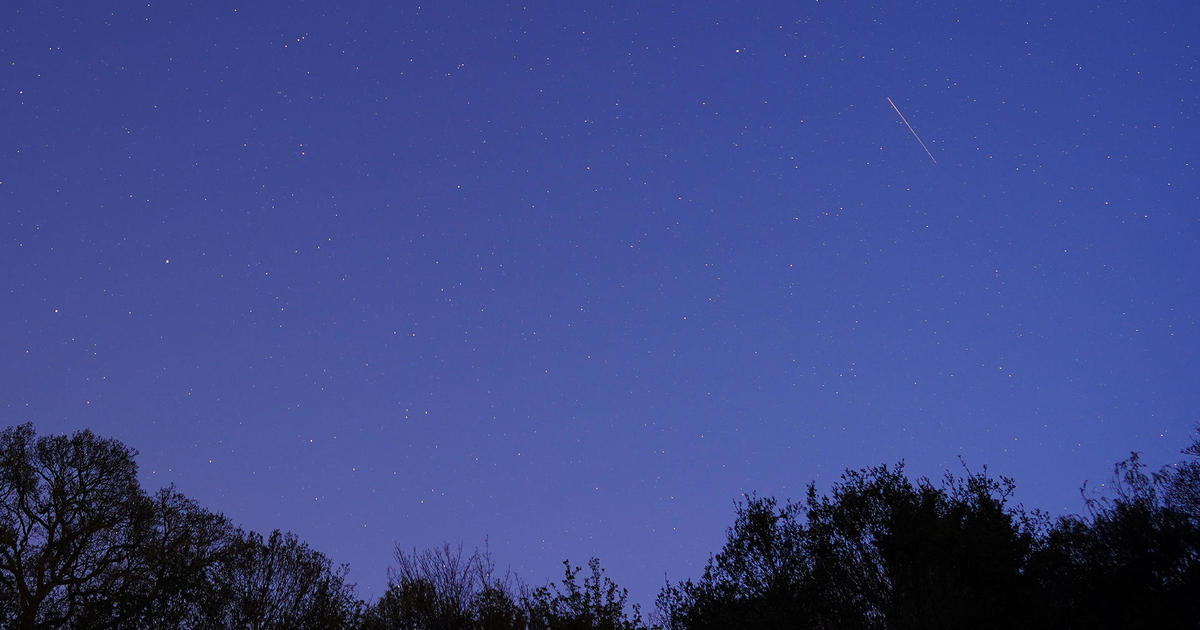Mars Set To Make Its Brightest Appearance In Fifteen Years
Find Eric Fisher on Twitter and Facebook
With clearing skies moving in for the weekend and much drier air, it's going to be a perfect opportunity to 'look up'! July brings all sorts of night sky treats and this year delivers an extra special one. Mars is making a dazzling appearance this month, and starting Saturday night it will become the third brightest night sky object behind the Moon and Venus! In fact, it will be the brightest we've seen from here on Earth since 2003.

Graphic: WBZ-TV
As an appetizer, look to the western sky as the sun tucks in for the night. There you'll find the very bright Venus for a couple hours after sunset. Low on the horizon you'll also spot Mercury beside it. While this makes for a nice scene, it'll be even better by mid-month when a crescent moon mingles with the two planets shortly after sunset.
Glancing upward, you may spot Jupiter high in the sky. Always a brilliant planet but about to be shown up by Mars, which is the real show-stopper this month.

Graphic: WBZ-TV
Both Mars and Saturn rise in the southeastern sky during the evening. Saturn just before sunset, and then Mars about 2 hours later as Venus sets in the opposite sky. It's easy to pick out Mars because of its rusty orange/red hue, and it will nearly overhead by midnight. I've already been enjoying it since early June but its brilliance will continue to markedly increase all month.
By Saturday (July 7th) it will surpass the brightness of Jupiter. And and will remain brighter than the largest planet of our solar system until September 7th.
If you think back to 2003, you may remember that Mars came closer to Earth than it had been in almost 60,000 years! These types of close passes always bring about TONS of hoaxes, like Mars will be larger than the moon. Those are most certainly false. And you won't see Matt Damon if you squint hard enough. But this month will be just a touch more faint than that 2003 event, and about 1.2 million miles farther away.
Mars is an interesting object to watch because its brightness varies wildly. It's a tiny planet...a little more than half the size of Earth. So it doesn't shine brightly in our sky as rule like much larger planets (such as Jupiter). It has to be close to be bright, and when it's far away it becomes very faint. Our orbits around the sun are not in sync as Earth takes 1 year to orbit and Mars takes about 2. Sometimes we're on the same side of the solar system and sometimes we're on opposite sides. So its brilliance comes and goes.
Every 2 years and 50 days, Mars is in opposition (Earth passes between Mars and the Sun). This year, opposition will take place on July 27th, and it will be a 'perihelic opposition.' This means Mars will also be at the closest point to the sun in its orbit. So all told, it's going to be quite a show! Peaking late in July but brilliant all summer long through Labor Day Weekend. Make sure to take a few moments to enjoy.
One other note on the July sky - we have a supermoon on July 13, but it's during the new moon phase. So you don't get the glory of all those beautiful full moon shots. That being said, this will produce very high/low tides and likely a few days of coastal flooding. It's the closest 'new moon supermoon' of 2018. We've never recorded a 13' water level in Boston during July, August, or September...and I think this one has a shot to mark our highest water level during any of these months. Of course, rising seas play a role in setting such a mark. We'll see which way the wind blows that week!




